Plant Profiles dive deep on one plant variety. They are meant to provide you with enough information to make good growing decisions. A desire to grow gorgeous flowers is one thing. However, discerning if a particular plant is right for you and your climate is a whole other ballgame.
My intention here is to give you as much practical information to make these decisions. However, I’m going one step further and taking you completely behind the scenes to share exactly what has worked for us as well. For this reason, Plant Profiles are broken up into what I’m calling the “Nuts and Bolts (N&B)” and “Behind the Scenes (BTS).”
If you haven’t already, please be sure to read the FFY Introduction to learn more about how Plant Profiles are organized.
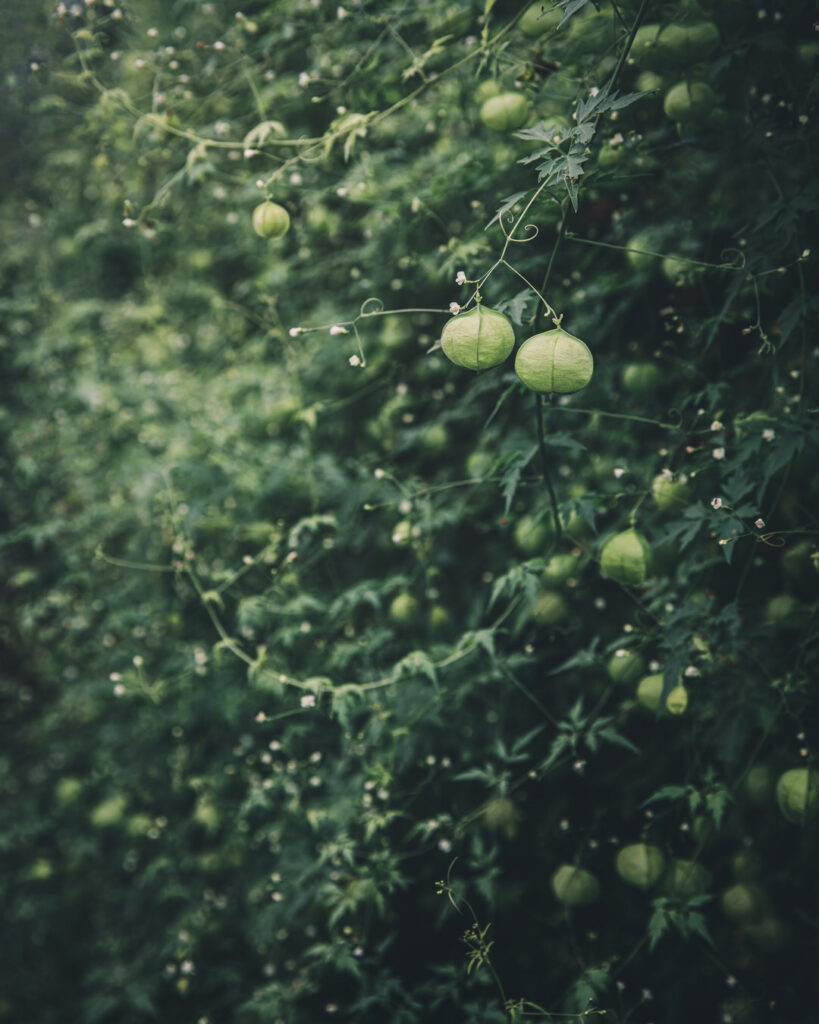
Primary Sources
The primary sources for the N&B portion come from:
- A Comprehensive Review on Cardiospermum halicacabum (Suresh, Aathira & Paramakrishnan, Nallupillai & B., Mahesh & Mruthunjaya, K.). Journal of Natural Remedies. 283-293. 10.18311/jnr/2023/29382.
- Cardiospermum halicacabum. Climbers: Censusing Lianas In Mesic Biomes of Eastern Regions (Burnham). University of Michigan.
- Floret Flowers: Family run flower farm and seed company.
- Select Seeds: Love-in-a-Puff Growing Guide. Select Seeds – Antique Flowers offers gardeners a fabulous selection of unique, high-quality flower seeds and plants, specializing in old-fashioned fragrant flowers, flowering vines, and rare annuals and perennials.
Zone Considerations
- Erin Benzakein’s Farm, Floret Farm, is located in Washington’s Skagit Valley
- Select Seeds in located in Union, Connecticut
- My farm, Petal Back Farm, is located in Zone 4b Wisconsin
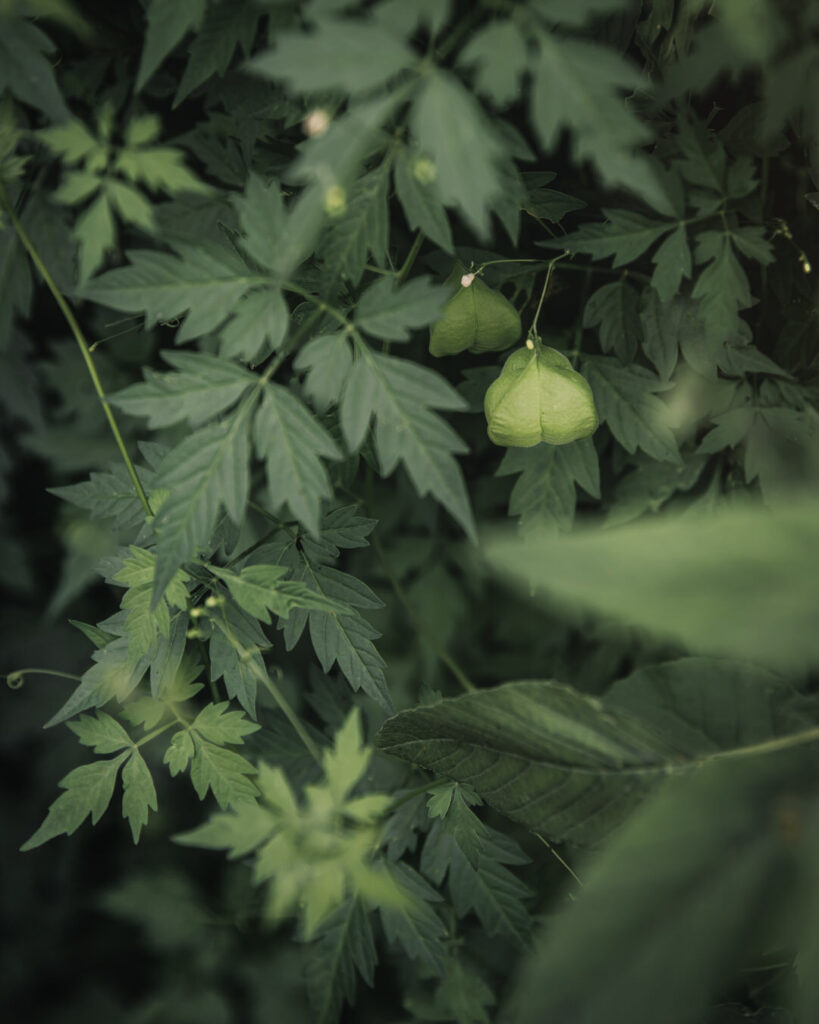
General Information: N&B
Latin Name Name: Cardiospermum halicacabum
Common Name: Love-in-a-Puff Vine, Balloon Vine, Heart Seed, Frolitos
Origin: Tropics and Subtropics
Days to Maturity: 120 days
Life Cycle: Tender perennial, typically grown as annual
Spacing: 1–8″
Height: 10–12′
I hope you’ll join me for a little bit of a different plant profile: love-in-a-puff vine! People go crazy over this plant. It’s delicate, twining vines with tiny tendrils and balloon-shaped seedpods add so much interest to bouquets and arrangements. In fact, that’s part of where it gets it’s name. “Puff” is for the balloon-like pods and “Love” comes from the heart-shaped pattern on its seeds.
While the data is somewhat scarce when it comes to cut-flower production, this vine has actually been studied more as a weed and/or for it’s medicinal properties.
This native to the tropics is fast growing and incredibly prolific. It has been introduced throughout the southern and southeastern United States (Virginia to Georgia to Texas) as well as Michigan, New Jersey, Ohio, Illinois, and Montana. It can also be found in East Asia, India, Africa, and Southern Europe (University of Michigan). It should be noted that in some places, it can be considered a noxious weed.
Interestingly, this plant is also known for it’s medicinal properties. In Ayurveda and folk medicine, it is used to treat fever, lumbago, and earache. It is also used as stomachic, rubefacient, and diuretic. It possesses pharmacological activities such as antioxidant, anti-diabetic, anti-viral, anti-convulsant, anti-diarrheal, anti-cancer, anti-bacterial, and anti-fungal (Journal of Natural Remedies). Plants are so amazing!
General Information: BTS
I took a chance growing this our first season, and I’m so glad I did. I love weaving it’s delicate, enchanting vines into arrangements. Most importantly though, my customers were as obsessed with it as me!! I don’t know why this surprised me. I guess maybe because I can geek out over some really esoteric plants and not everyone is going to come on that ride, ha! But this is one plant I *constantly* am asked about by our local customers. Florists love it too!
So, I thought we’d take a little winding ride together on this plant profile. Even though the literature is a bit scarce, I’ll hit ya with some facts I was able to dig up and then share exactly how we grow this magical plant here on our farm.
What I love most about love-in-a-puff vine as a cut:
- Easy to grow
- Fast to flower/pod
- Whimsical stems
- Extremely prolific (come and cut)
- Fabulous for design (especially garden style)
- Attracts pollinators
- Disease resistant
But every rose has its thorn, right? Potential shortcomings:
- Tedious to harvest
- Attracts Japanese Beetles (urg)
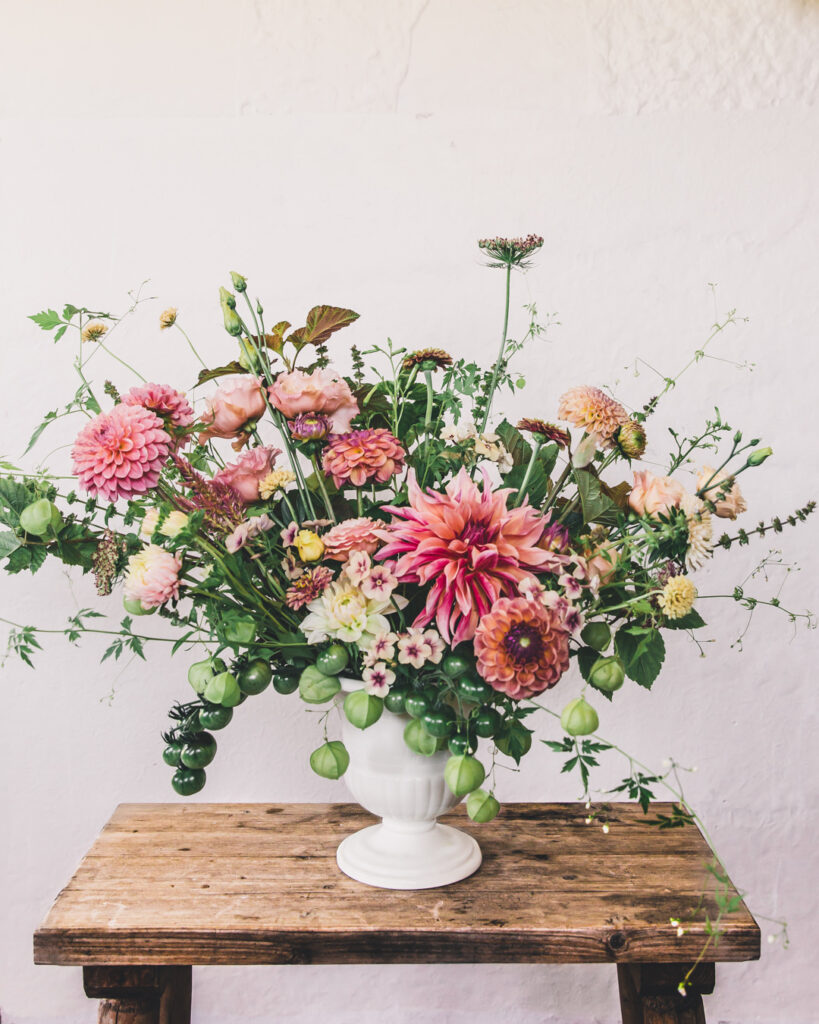
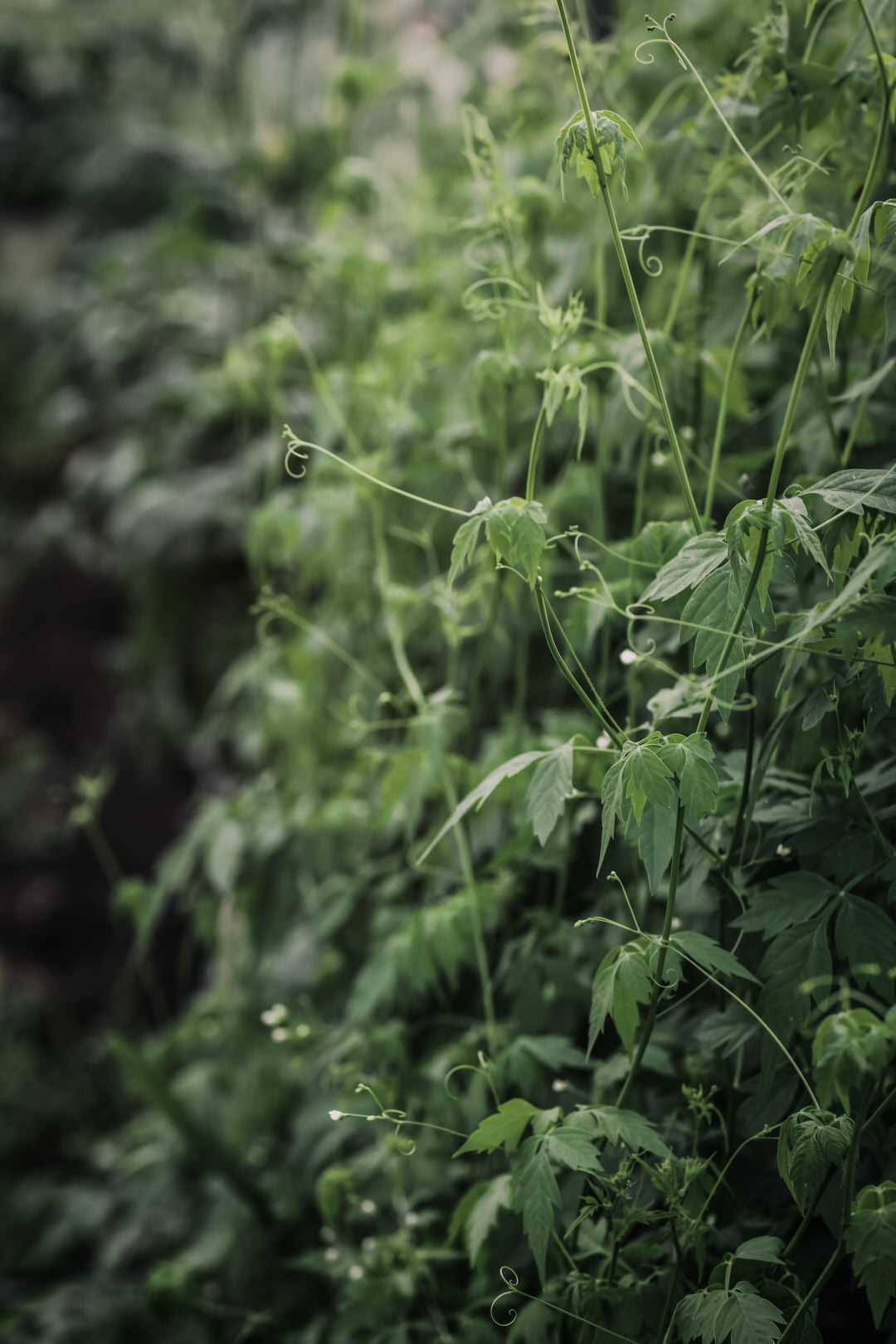
Propagation: N&B
Select Seeds recommends starting indoors, 6-8 weeks before last spring frost, while Floret recommends 8–10. Nick the seed coat with a file before sowing, cover by 1/2″. Love-in-a-puff vine germinates in 7-20 days at 65-70F (18–121C). It’s important to wait until frost to transplant, because it is sensitive to cold weather. It can also be direct sown after frost.
Propagation: BTS
I sow love-in-a-puff vine like I do all of my vines in deep, 50-cell trays. I do not nick the seed coat. Love-in-a-puff seed is *extremely* easy to save. At the end of the season, the pods usually contain 3 perfect little seeds with a heart shape. It’s an generous re-seeder as well.
Environmental Factors: N&B
Love-in-a-puff vine prefers moist thickets, waste places, and riverbanks (University of Michigan). It should be planted in full sun and get plenty of moisture. It is sensitive to cool weather and prefers the heat of summer.
Environmental Factors: BTS
Even though we have sandy loam on the farm, love-in-a-puff vine is still quite vigorous here. I’ve grown it both in the high tunnel, as well as out in the field, and it does well in both environments. I’m actually thinking about growing it in some of our hanging baskets🙂 We can have incredibly-hot summers here in the midwest and it does not bat an eye. This plant is truly a champ!
Transplanting, Spacing, Support: N&B
Transplant love-in-a-puff vine outdoors after last frost and once plants have hardened off, 1–8″ apart. Select Seeds lists 1 inch, while Floret lists 8 inches apart. It will require support, such as a trellis.
Transplanting, Spacing, Support, Weed Control: BTS
I’ve always transplanted love-in-a-puff vine after frost, even in the tunnel. I’d try it sooner, but we’re usually busy trying to get other things planted.
I grow it on a trellis the same way I do sweet peas. We pound 8-foot T-Posts into the ground about 5 feet apart and then attached Hortonova netting to the posts with zip ties. The tendrils on the vines grab onto the netting, but I’ll also corral them in with twine to keep things from going too crazy.
I’ve always spaced them 6–8 inches apart. I suppose you could go closer but they seriously grow like crazy, so I never end up using it all anyway.
For weeding, I just use a collinear hoe or pull them by hand. I don’t use fabric with vines, but I have mulched with hay before.
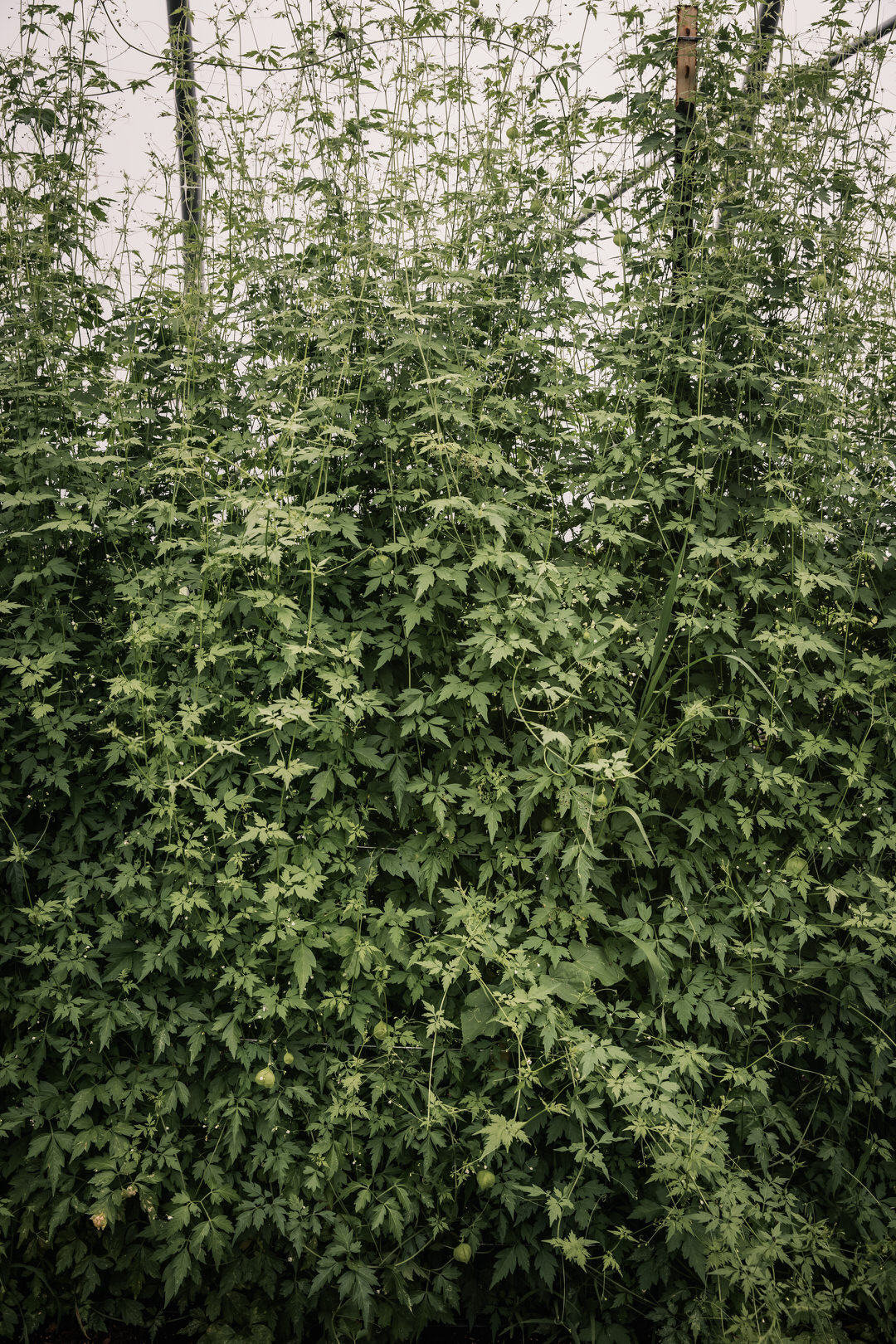
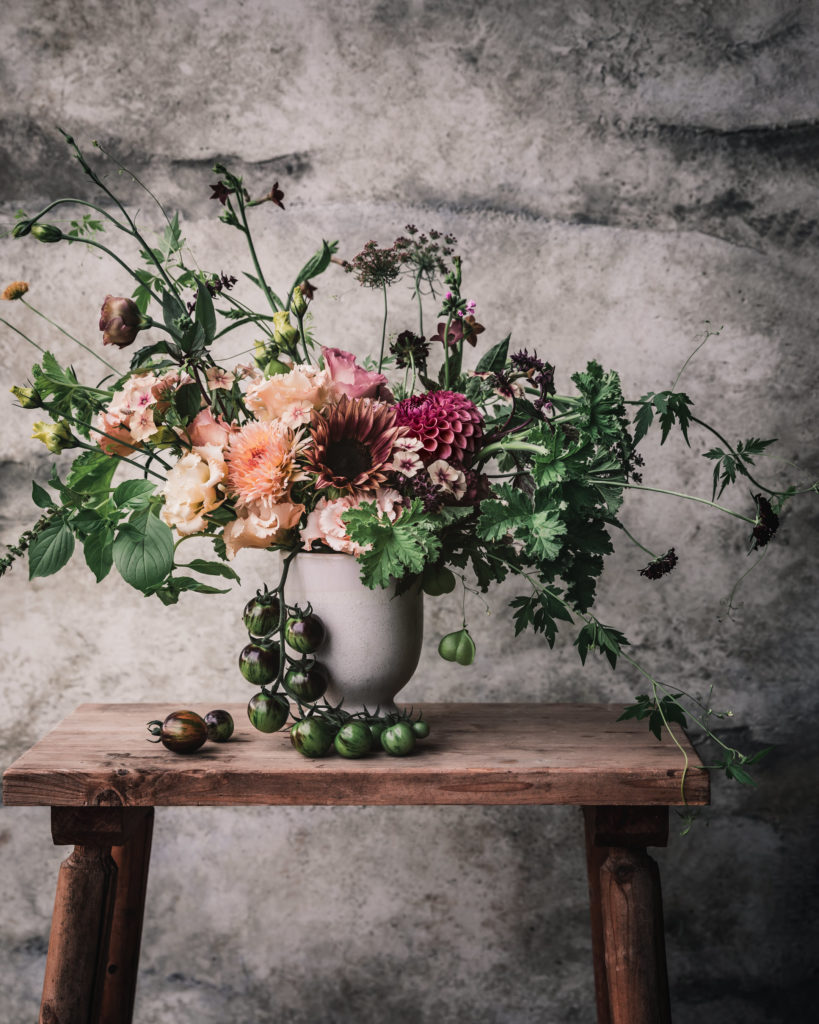
Successions: N&B & BTS
Because love-in-a-puff vine is a prolific come-and-cut again, you don’t need successions.
Nutrition: N&B
The data is fairly limited on optimum nutrition. Most sources recommend compost and/or a balanced fertilizer. Given it’s vigorous growth habit, it’s fairly safe to assume it will grow well in average soil conditions.
Nutrition: BTS
We fertilize our fields organically based on soil tests, and we do not fertilize for each crop individually. I have an eBook that outlines exactly how we do this. I’ve made that available for you here.
Drainage & Irrigation: N&B
While love-in-puff vine can tolerate dry conditions, it prefers moist environments and benefits from consistent watering.
Drainage & Irrigation: BTS
At our farm, we have gossil-loamy sand, meaning that our soil is more sand than loam. It actually drains excessively to the point of leaching nutrients. Our biggest difficulty is keep plants irrigated, especially in dry spells. For this reason, we do have drip irrigation installed on all of our beds at the home farm.
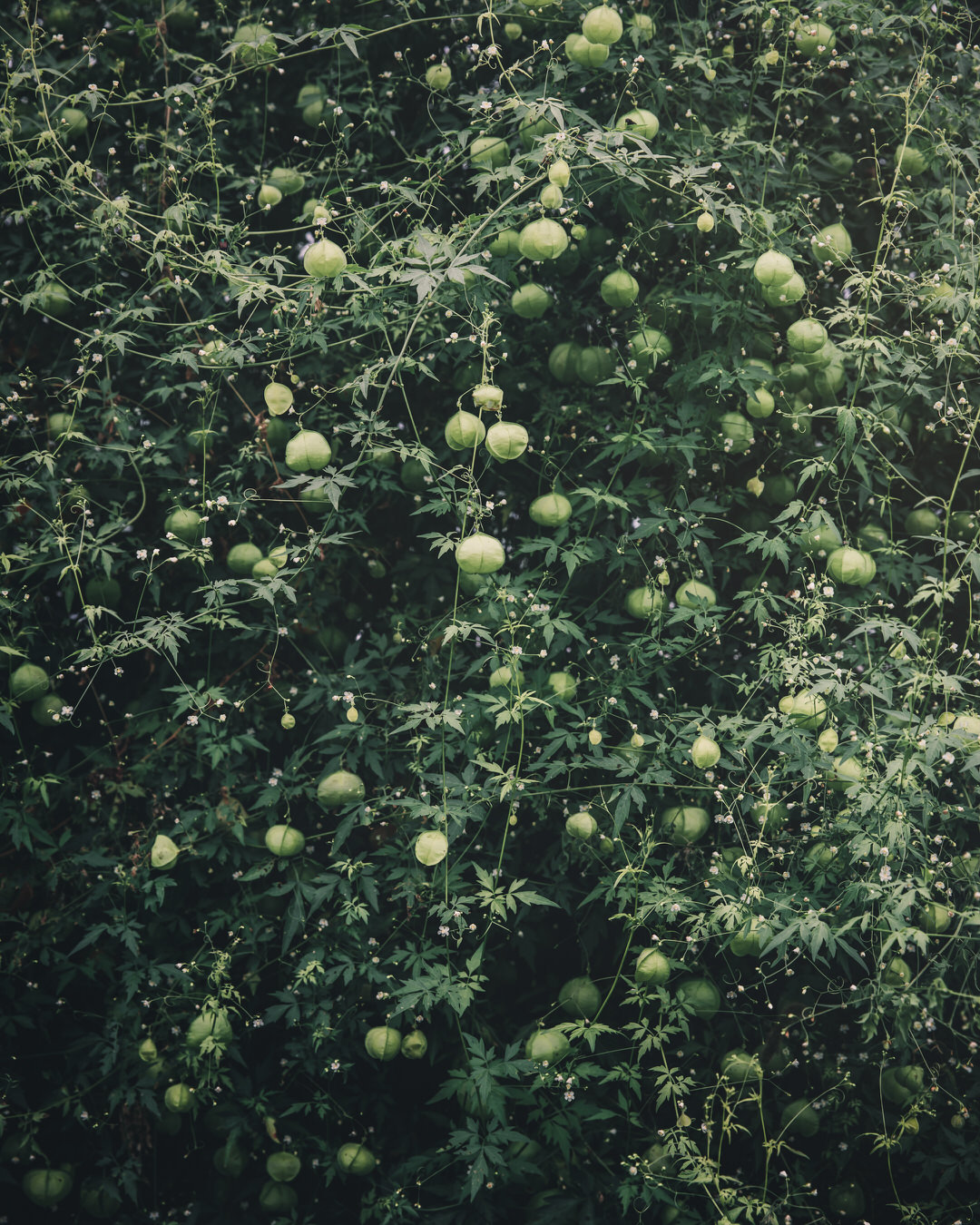
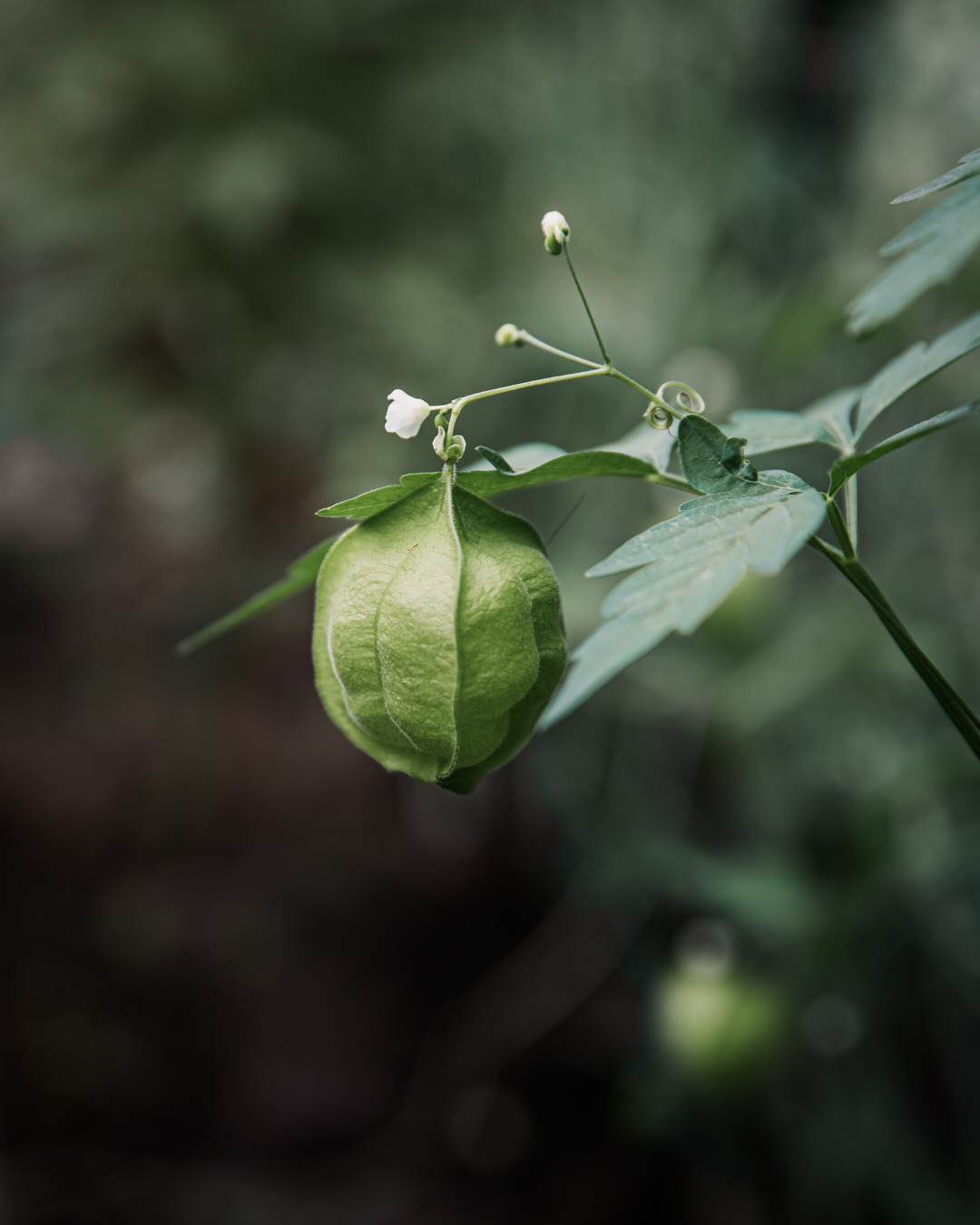
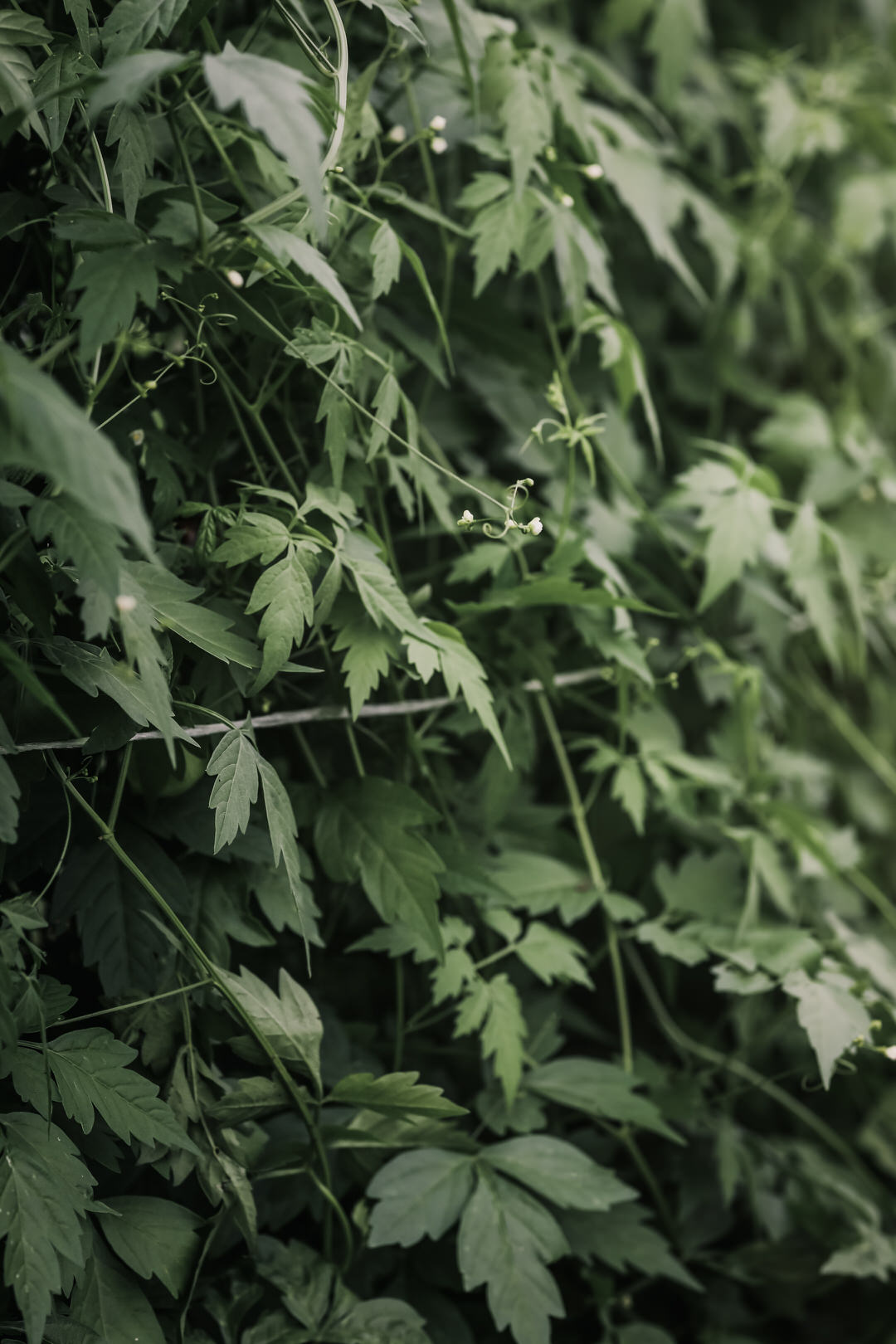
Pinching: N&B and BTS
To encourage vining, plants can be pinched, but they don’t need to be. As long as they have enough moisture, these vines will grow and continue to grow, climbing over just about anything.
Bloom Period: N&B and BTS
According to the University of Michigan, love-in-a-puff vine flowers from July to August with seeds ripening from August to October. It is the same in Wisconsin.
Overwintering: N&B and BTS
Love-in-a-puff vine is a tender perennial in warmer regions (7 or 8 and above). It cannot be overwintered in Wisconsin, but it is a generous re-seeder, especially in the high tunnel.
Harvest & Post-Harvest: N&B
Harvest stems once they are covered in balloon-shaped pods. Cut deep to encourage more lateral side shoots. Can be wilt prone, so cut during the coolest parts of the day (Floret). Expected vase life is 5 to 7 days.
Harvest & Post-Harvest: BTS
We harvest at the stage as recommended above. However, I have to admit that I have cut it at all times of the day (even during hot weather, oops). I don’t find that it wilts much for me, but I do usually cut vines and foliage into a bucket with hydrating solution. If I am harvesting bunches for florists, I will give it a quick dunk in Quick Dip to make sure they’re getting the best product possible. I also usually cut a few extra stems for florist orders, just in case (and it’s so prolific). Because you can basically just cut off the plants when you need it, I don’t store in the cooler except perhaps to condition prior to designing. It is kind of a pain to harvest, just because it is a vine and so light weight, you have to make sure the cut ends hit water.
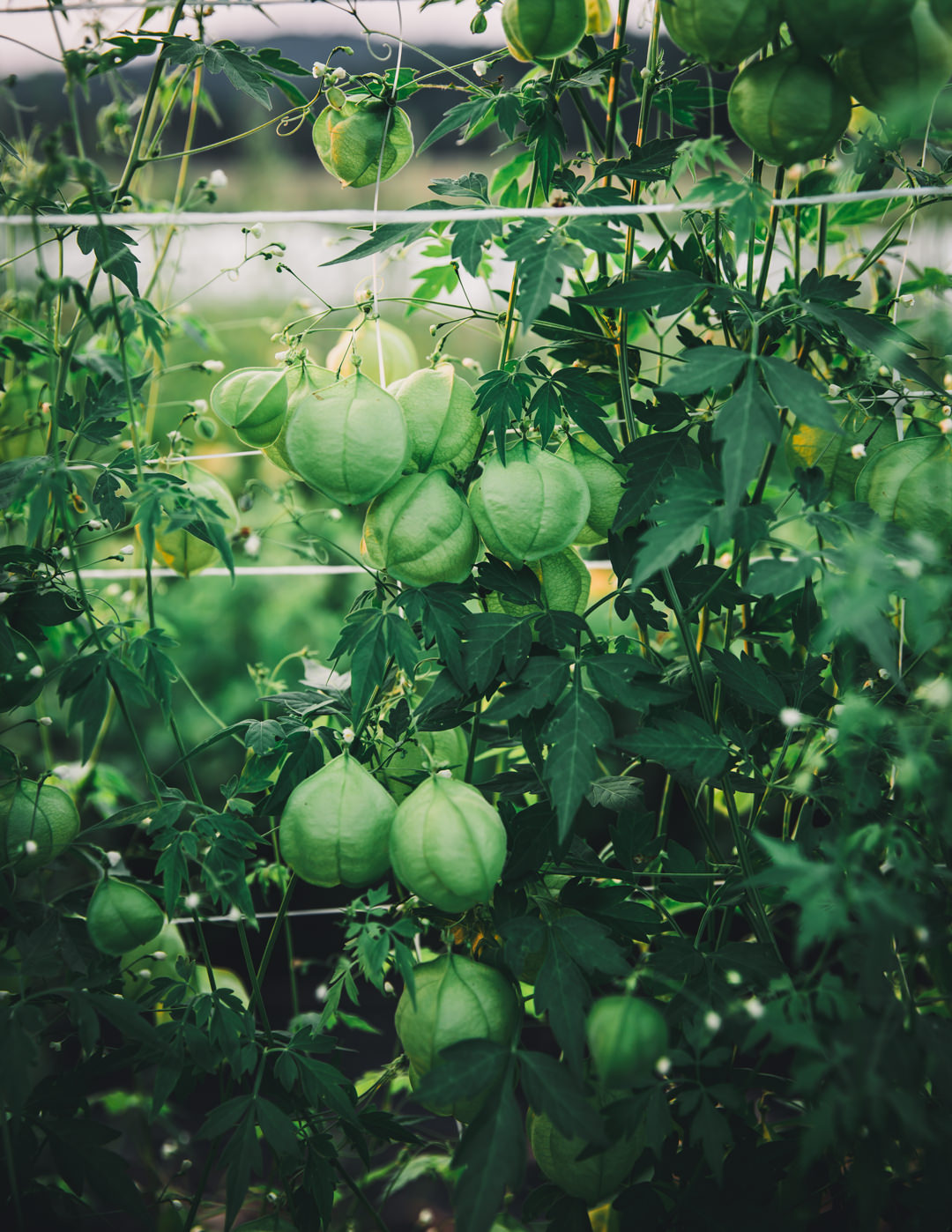
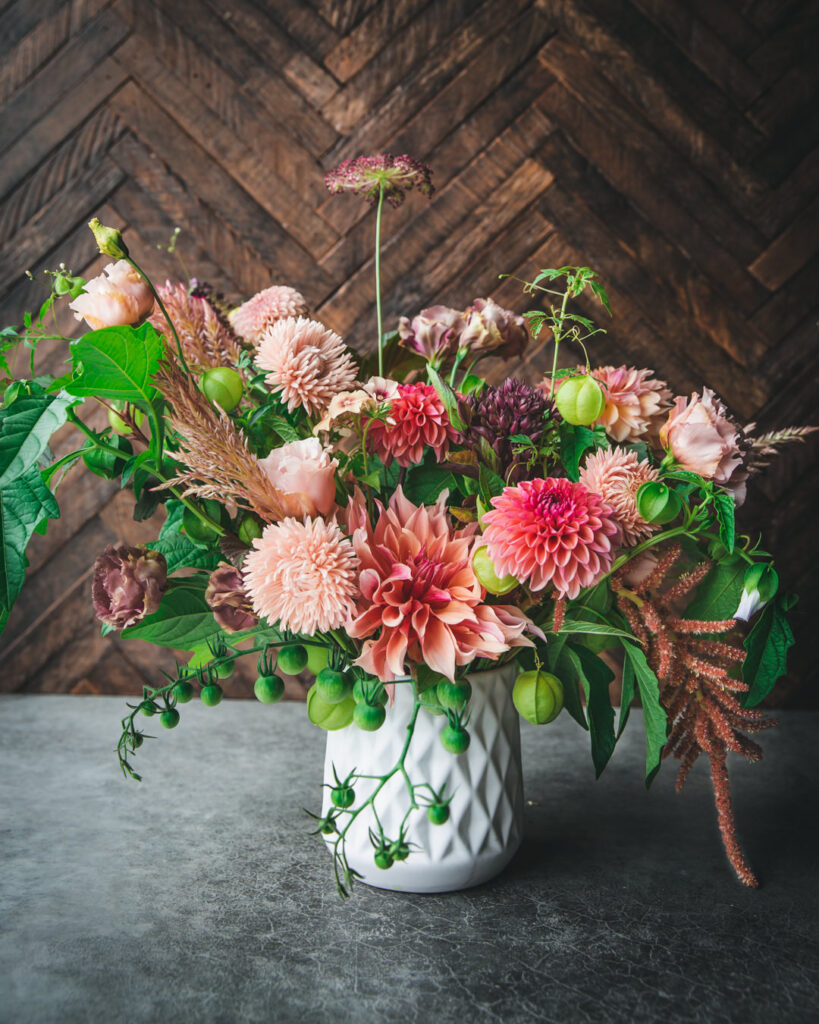
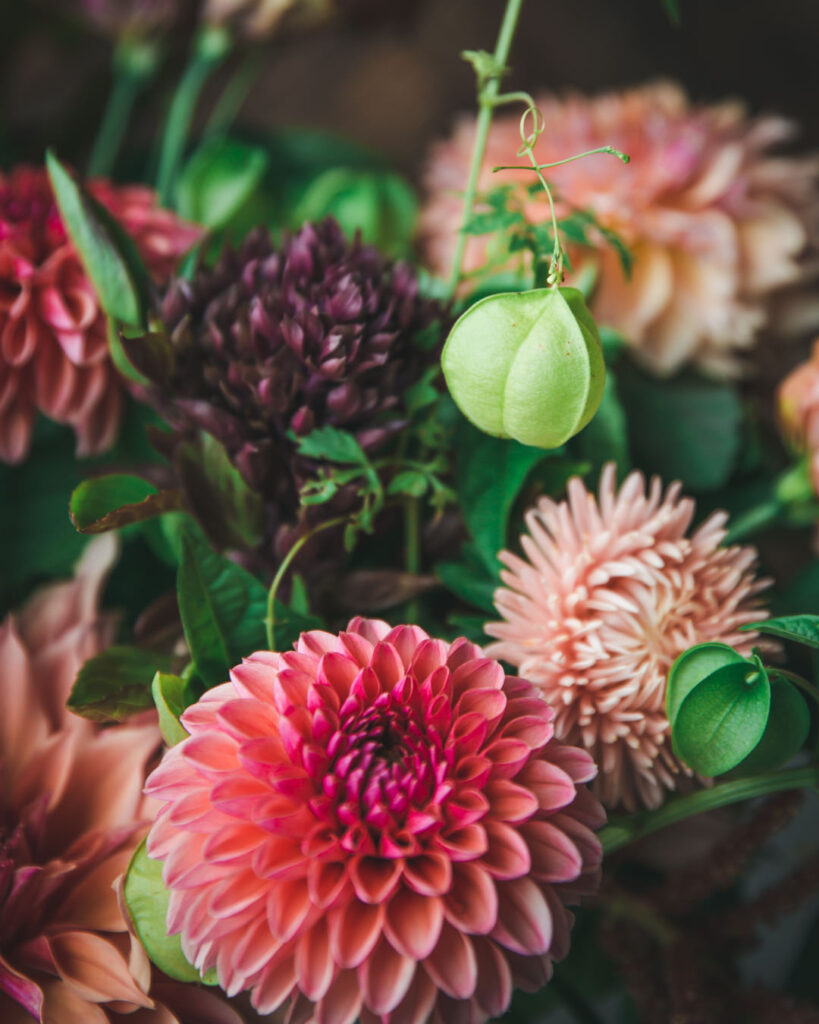
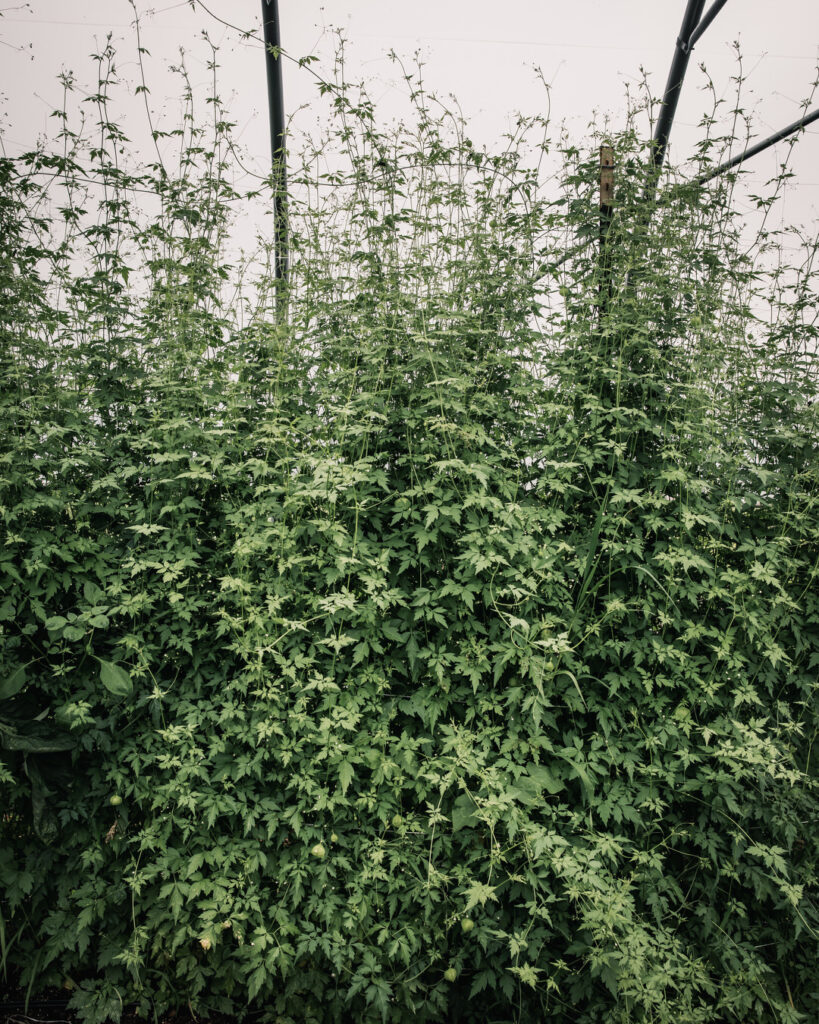
Pests & Disease: N&B and BTS
While most sources state that love-in-a-puff vine has no serious pest or disease issues, it has one MAJOR pest for me and that’s Japanese beetles, UGH! I rarely use the word hate, but I hate them, spawn of satan. The silver lining is that they are usually munching on the tiny white flowers and not the leaves. There are so many white flowers, they still produce plenty of balloon pods.
Although I’d prefer not to have Japanese beetles AT ALL, I do kind of think of love-in-a-puff vine as a decent trap plant. The damage isn’t too terrible and I can knock a bunch off into soapy buckets this way. For those with Japanese Beetles, we’ve also put down milky spore in our tunnel and fields. They are so prevalent in our area, I think we’ll always have fly-ins, but I hope this minimizes them at the very least.
Variety Selection: N&B and BTS
As far as I know, there is really only one variety with the heart-shaped seeds and you can get it through Select Seeds and Ball (which is where I got my original seed). I don’t believe you can get it through Floret any more, but I’d plug her if you could!
Pricing: N&B and BTS
I cannot find any wholesale prices for this. Anyone else?
$10.0–$12.50 / bunch is my florist price.
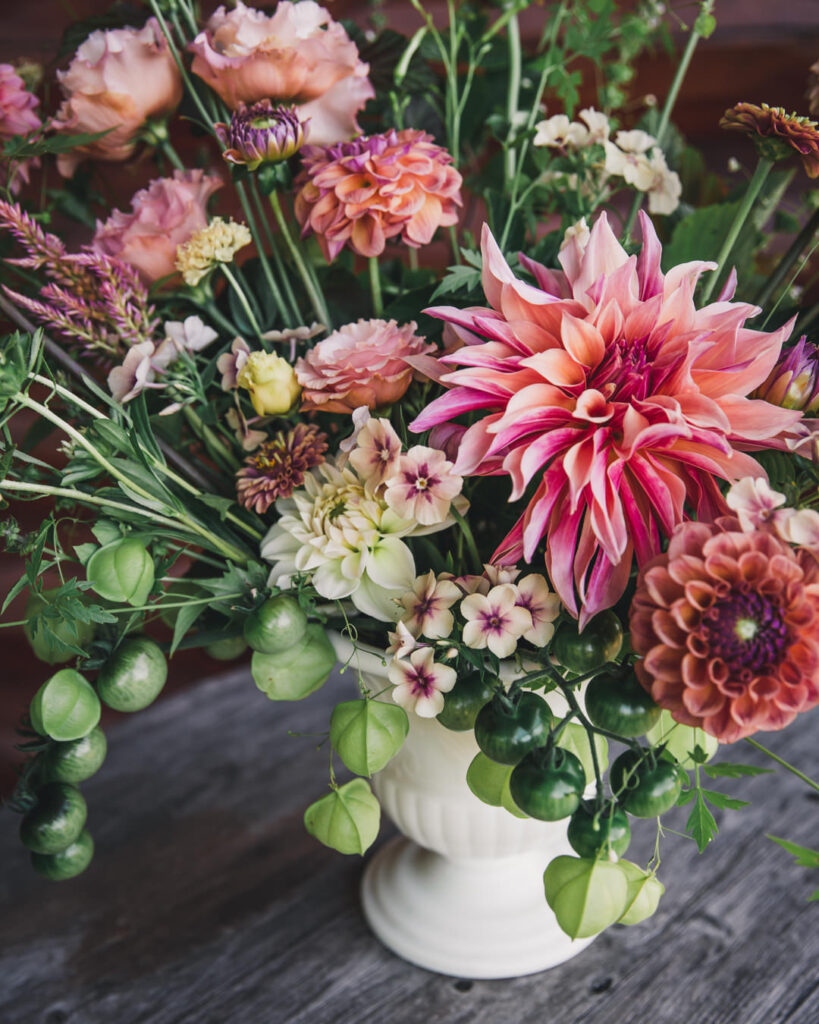
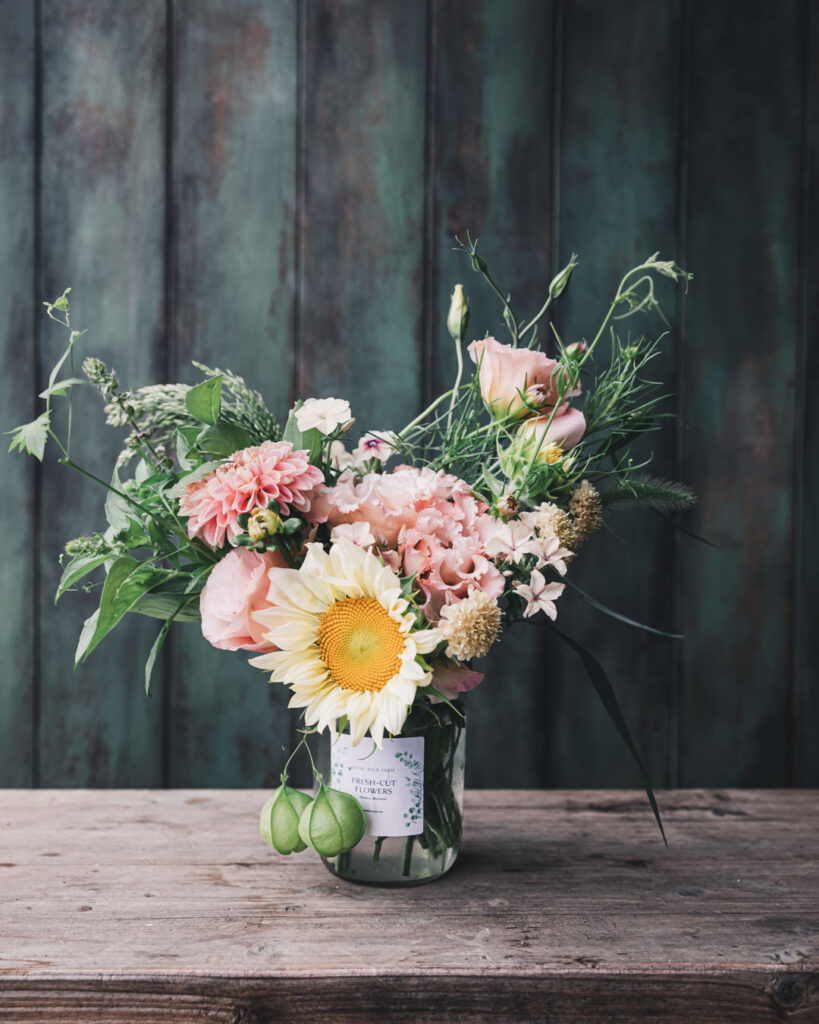
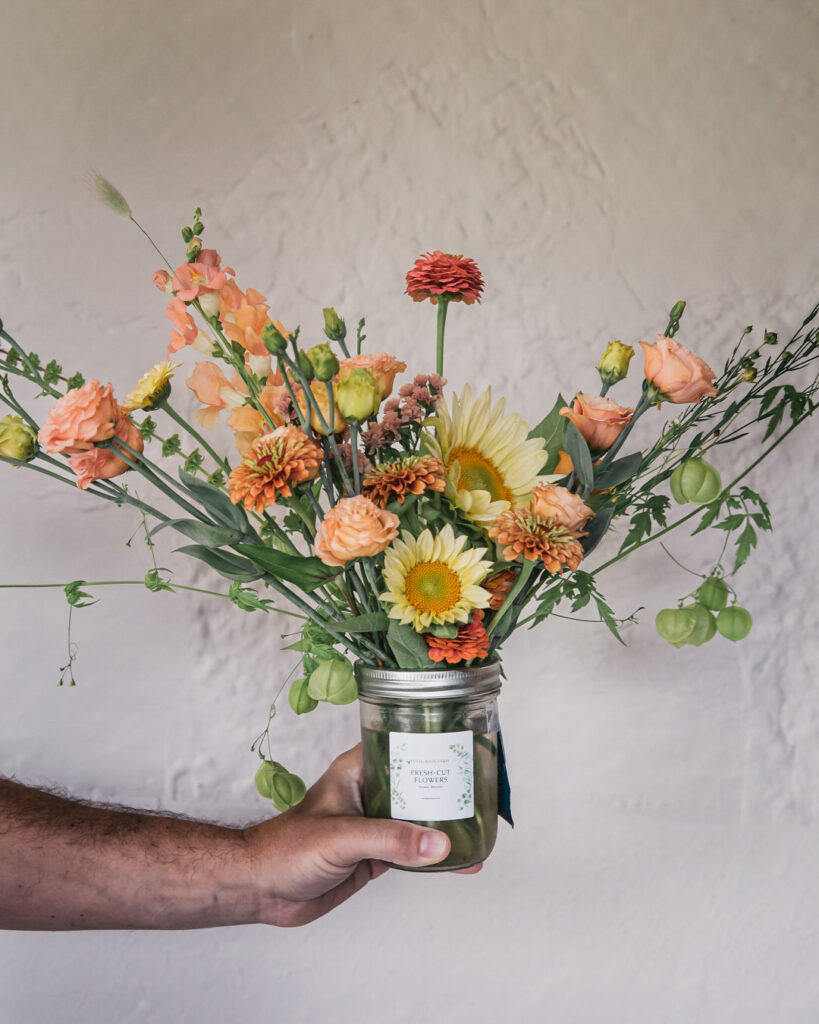
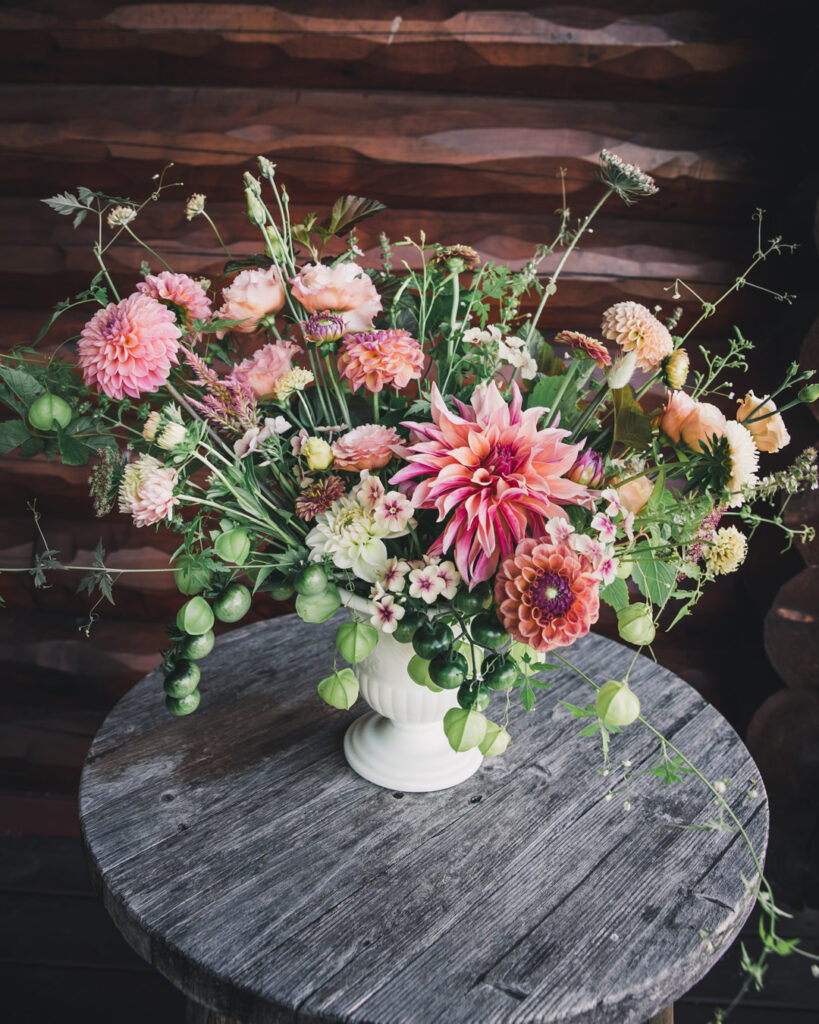
Design: N&B and BTS
Look, I adore it. Love-in-a-puff just adds that something extra. It captures that wildness from the garden look, but in a delicate and whimsical way. And don’t let those sweet vines fool you on their toughness. Despite the warnings of wilting, I haven’t really had a problem with them.
There pods are beautiful green, but they also are useful dried, adding a textural element. And while I truly love them for design work in arrangements, I also use them in market bouquets and mason all the time! Just a pick a bunch and add in extras, everyone will thank you 🙂
They can pretty much be weaved into just about anything, just be sure that the lightweight stems make it to the water.
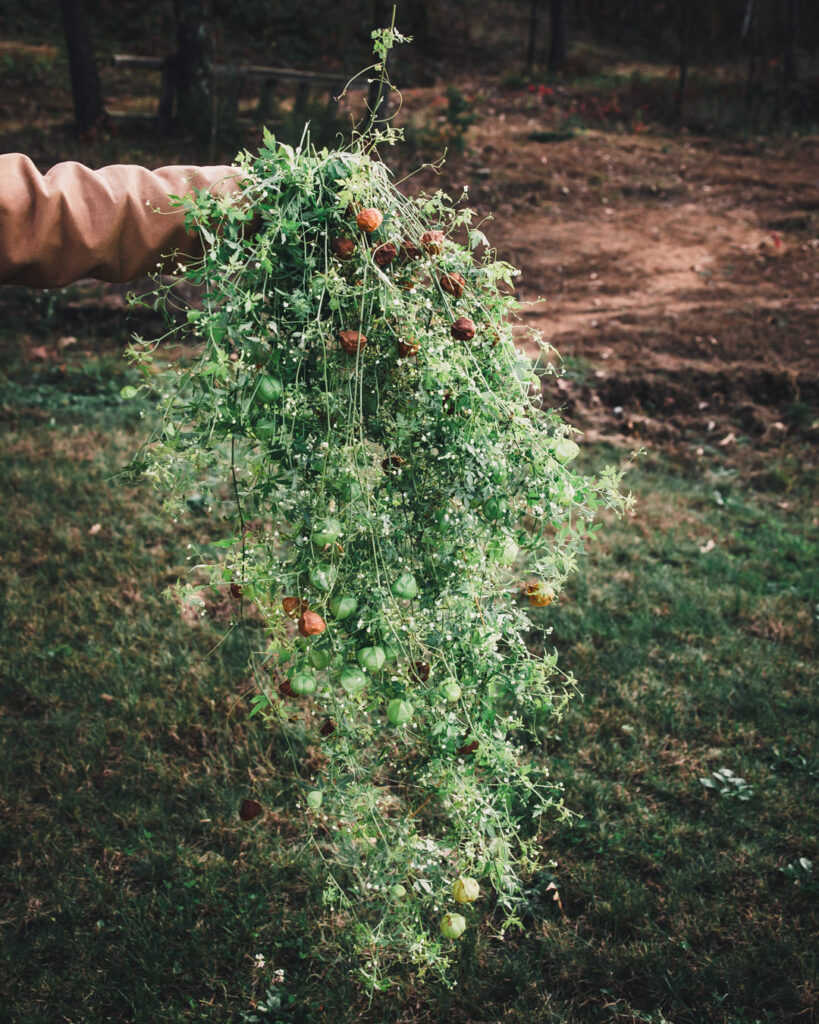
Wrap Up
OK, my friend, that is IT for this Plant Profile. What do you think? Would you grow love-in-a-puff vine? Did you find some useful nuggets? Be sure to save a PDF copy using the buttons below, so you can always refer back to it.
Have any questions or something you want to share with me or others? I know I say this ad nauseam, but I truly believe in the power of the collective and that we all have something unique and powerful to share, so please leave a question or share a comment below. We’re all better for it, and I thank you in advance!
Cheers pal!
I bought some seed but haven’t started it yet. Do you think I can direct seed now? I’m zone 7b, last frost is May 15 and first frost is Oct 15. Also would it grow well against a wood fence in afternoon shade? I have a spot I grow blackberry/raspberry and was thinking of adding love and puff there too in an empty spot near them. It gets good moisture (I’m in high desert so it’s hard to keep everything well watered even with drip, so hot and dry here! ), but sun is only until about 1pm, then it’s full shade. Thanks!
Hi, Shannon:
Yes! I absolutely do think you can direct seed now. I’ve only grown it in full sun but it’s so prolific, I think you could definitely get away with it against a fence in afternoon shade. At the very least, it’s worth a try!! If it takes off, I wouldn’t be surprised if it reseeds itself YOY. I think it will climb the fence and the berries, it sounds really beautiful 🙂 Keep me posted, I’d love to learn how it goes!!